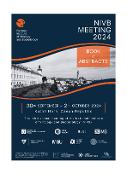The Composition of The Gut Virome is Associated with the Later Development of Coeliac Disease: Results of A Prospective Follow-Up of Two Neonatal Cohorts

Author
Tapia, German
Hubáčková, Klára
Shah, Shiraz
Thorsen, Jonathan
Boulund, Ulrika
Stene, Lars Christian
Stordal, Ketil
Veijola, Riitta
Hyoty, Heikki
Divíšek, Tereza
Šímová, Šárka
National Institute of Virology and Bacteriology
Publication date
2024Published in
NIVB Meeting 2024Publisher / Publication place
Česká společnost chemická (Praha)Volume / Issue
22 (6)ISBN / ISSN
ISSN: 2336-7202Funding Information
MSM//LX22NPO5103
Metadata
Show full item recordCollections
Abstract
Celiac disease (CD) develops in only a tiny fraction ofindividuals who carry susceptible HLA genotypes andconsume gluten. This has prompted the search forenvironmental triggers or accelerators, including the realm ofviruses. The objective of this study was to investigate whethergut virus exposure in early life differs between children laterdeveloping celiac disease, compared to tightly matched CD-free controls.Two newborn cohorts preselected by HLA screeningwere investigated: the Norwegian MIDIA and Finnish DIPP.Cases of CD were identified by testing in late childhood, andstool samples from infancy were retrieved from therepositories. Each case of CD was matched to two CD-freecontrols by date and place of birth. Stool samples collectedmonthly between the age of 3 and 36 months were subjectedto unbiased virome metagenomic sequencing. A total of 2043viromes from 41 case-control trios were characterised.Previously unknown viruses were identified by cross-assembly and sequence-based classification. The associationof the gut virome with the subsequent CD was evaluated bycomparing results of standard machine learning techniques(partial least squares model and naive Bayes model) betweenactual data, and their variants with random permutations ofthe case-control labels.In total, more than 9,000 previously unknownbacteriophages were newly classified and their genomes wereannotated. The composition of the viromes differedsignificantly between children who later developed CD versustheir matched controls (kappa statistics = 0.11, P=10-14,Figure 1). This indicates an etiological involvement of phagesor their bacterial hosts very early in the CD pathogenesis.Although the signal is clear, the magnitude of the effect isminute, and no single virus signature could be identified thatwould explain the association.In a proof-of-concept study, we demonstrated thatcommon gut bacteriophages significantly affect the risk oflater non-infectious immunopathological disease, in a manneranalogous to that observed for e.g. asthma.
Keywords
Celiac disease,
Permanent link
https://hdl.handle.net/20.500.14178/2808License
Full text of this result is licensed under: Creative Commons Uveďte původ 4.0 International




